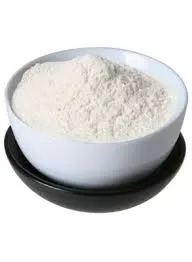
Nov . 17, 2024 11:19 Back to list
liquid thickener
Understanding Liquid Thickeners Enhancing Consistency and Texture in Food and Beyond
Liquid thickeners have become an essential ingredient in the culinary arts and various industries, playing a pivotal role in enhancing the texture and consistency of numerous products. From sauces and soups in the kitchen to personal care products and pharmaceuticals, liquid thickeners serve diverse purposes that go beyond simple aesthetics. This article delves into the types, uses, and advantages of liquid thickeners, highlighting their significance in modern applications.
What are Liquid Thickeners?
Liquid thickeners are substances that increase the viscosity of liquids without substantially altering their other properties, such as flavor and appearance. They can be derived from natural sources, such as starches and gums, or manufactured synthetically. Common examples of natural thickeners include cornstarch, xanthan gum, guar gum, and gelatin. These thickeners absorb water and swell, creating a gel-like consistency that enhances the mouthfeel and stability of food products.
In the food industry, liquid thickeners play a crucial role in achieving the desired thickness in a variety of products. They are used in everything from gravies and dressings to smoothies and desserts. Their ability to provide a delightful texture not only enhances the eating experience but also improves visual appeal.
Types of Liquid Thickeners
1. Starch-Based Thickeners Cornstarch is one of the most widely used thickeners in kitchens worldwide. When heated and combined with a liquid, it forms a clear gel that thickens sauces and soups. Potato starch and tapioca are other notable starch-based thickeners that offer different textures and clarity.
2. Gums Gums, such as xanthan gum and guar gum, are powerful thickeners that can be used in small quantities. Xanthan gum is produced through fermentation and can stabilize emulsions, making it a popular choice in salad dressings and gluten-free products. Guar gum, derived from guar beans, has excellent thickening properties and is often used in baked goods.
3. Pectin Used primarily in jamming and jellies, pectin is a natural thickener derived from fruits. It works well in high-sugar environments, making it ideal for sweet preserves that require a gel-like consistency.
4. Gelatin Gelatin, derived from animal collagen, is another popular thickening agent used in desserts like panna cotta and jellies. It imparts a unique texture and mouthfeel that is hard to replicate with plant-based alternatives.
liquid thickener

Uses in Various Industries
While the culinary world reaps the benefits of liquid thickeners, their applications extend to various fields, including pharmaceuticals, cosmetic products, and personal care items. In the pharmaceutical industry, thickeners are often added to liquid medications to achieve the desired viscosity for easy administration, especially in pediatric and geriatric populations.
In cosmetics, liquid thickeners are used in lotions, creams, and gels to improve product texture and stability. They help in achieving the desired viscosity while also ensuring that the active ingredients remain well-dispersed within the formulation.
Advantages of Using Liquid Thickeners
1. Improved Texture and Mouthfeel Liquid thickeners can significantly enhance the sensory experience of a product, making it more appealing to consumers. A well-thickened sauce or dressing can elevate a dish and make it more enjoyable.
2. Stabilization Many thickeners also act as stabilizers, preventing the separation of ingredients and prolonging shelf life. This is particularly important for emulsified products like dressings and sauces.
3. Versatility Liquid thickeners can be used in a wide range of applications, from savory dishes to sweet treats, as well as in non-food products. This versatility makes them valuable in both home kitchens and industrial settings.
4. Health Benefits Some thickeners contribute dietary fiber to food products, aiding in digestion and promoting a feeling of fullness, which can be beneficial for weight management.
Conclusion
Liquid thickeners play a vital role in crafting the consistency and texture of various products across multiple industries. Their diverse applications highlight their significance, not only in enhancing culinary creations but also in improving the usability and stability of pharmaceuticals and cosmetics. As consumers continue to seek products with appealing textures and better stability, the demand for effective liquid thickeners will undoubtedly grow, shaping the future of food and product formulation.
-
Versatile Hpmc Uses in Different Industries
NewsJun.19,2025
-
Redispersible Powder's Role in Enhancing Durability of Construction Products
NewsJun.19,2025
-
Hydroxyethyl Cellulose Applications Driving Green Industrial Processes
NewsJun.19,2025
-
Exploring Different Redispersible Polymer Powder
NewsJun.19,2025
-
Choosing the Right Mortar Bonding Agent
NewsJun.19,2025
-
Applications and Significance of China Hpmc in Modern Industries
NewsJun.19,2025







